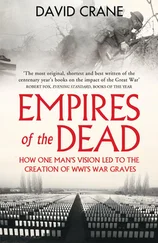The 18 X-ray program was a considerable incentive; traditionally, before 9/11, I would’ve had to already be in the army before being given a shot at attending the Special Forces’ qualification courses. The new system worked by screening prospective soldiers up front, identifying those with the highest levels of fitness, intelligence, and language-learning ability—the ones who might make the cut—and using the appeal of special training and a rapid advance in rank to enlist promising candidates.
I’d put in a couple of months of grueling runs to prepare—I was in great shape, but I always hated running—before my recruiter called to say that my paperwork had been approved: I was in; I’d made it. I was the first candidate he’d ever signed up for the program, and I could hear the pride and cheer in his voice when he told me that after training, I’d probably be made a Special Forces Communications, Engineering, or Intelligence sergeant.
Probably.
But first, I had to get through basic training at Fort Benning, Georgia.
I sat next to the same guy the whole way down there, from bus to plane to bus, Maryland to Georgia. He was enormous, a puffy bodybuilder somewhere between two and three hundred pounds. He talked nonstop, his conversation alternating between describing how he’d slap the drill sergeant in the face if he gave him any lip and recommending the steroid cycles I should take to most effectively bulk up. I don’t think he took a breath until we arrived at Fort Benning’s Sand Hill training area—which, I have to say, didn’t actually seem to have that much sand.
The drill sergeants greeted us with withering fury and gave us nicknames based on our initial infractions and grave mistakes, like getting off the bus wearing a brightly colored floral-patterned shirt, or having a name that could be modified slightly into something funnier. Soon I was Snowflake and my seatmate was Daisy, and all he could do was clench his jaw—nobody dared to clench a fist—and fume.
Once the drill sergeants noticed that Daisy and I were already acquainted, and that I was the lightest in the platoon—at five foot nine and 124 pounds—and he the heaviest, they decided to entertain themselves by pairing us together as often as possible. I still remember the buddy carry, an exercise where you had to carry your supposedly wounded partner the length of a football field using a number of different methods like the “neck drag,” the “fireman,” and the especially comedic “bridal carry.” When I had to carry Daisy, you couldn’t see me beneath his bulk. Daisy would get up with a laugh, drape me around his neck like a damp towel, and go skipping along like a child in the woods.
We were always dirty and always hurting, but within weeks I was in the best shape of my life. My slight build, which had seemed like a curse, soon became an advantage, because so much of what we did were body-weight exercises. Daisy couldn’t climb a rope, which I scampered up like a chipmunk. He struggled to lift his incredible bulk above the bar for the bare minimum of pull-ups, while I could do twice the number with one arm. When we did the two-minute push-up tests, they stopped me early for maxing the score.
Everywhere we went, we marched—or ran. We ran constantly. Miles before mess, miles after mess, down roads and fields and around the track while the drill sergeant called the cadence. When you’re running in unit formation, the cadence lulls you, filling your ears with the din of dozens of men echoing your own shouting voice and forcing your eyes to fix on the footfalls of the runner in front of you. After a while you don’t think anymore—you merely count, mile after mile. I would say it was serene if it hadn’t been so deadening. I would say I was at peace if I hadn’t been so tired. This was precisely as the army intended. The army makes its fighters by first training the fight out of them until they’re too weak to care, or to do anything besides obey.
It was only at night in the barracks that we could get some respite, which we had to earn by toeing the line in front of our bunks, reciting the Soldier’s Creed, and then singing “The Star-Spangled Banner.” Daisy would always forget the words. Also, he was tone-deaf.
Sometime during the third or fourth week we were out on a land navigation movement, which is when your platoon goes into the woods and treks to predetermined coordinates, clambering over boulders and wading across streams, with just a map and a compass—no GPS, no digital technology. We’d done versions of this movement before, but never in full kit, with each of us lugging a rucksack stuffed with around fifty pounds of gear. Worse still, the raw boots the army had issued me were so wide that I floated in them. I felt my toes blister even as I set out, loping across the range.
Toward the middle of the movement, I was in the lead and scrambled atop a storm-felled tree to check our bearings. After confirming that we were on track, I went to hop down, but with one foot extended I noticed the coil of a snake directly below me. Kids in North Carolina grow up being told that all snakes are deadly, and I wasn’t about to start doubting it now.
So I widened the stride of my outstretched foot, once, twice, twisting for the extra distance, falling. When my feet hit the ground, some distance beyond the snake, a fire shot up my legs that was more painful than any viper bite I could imagine. A few stumbling steps, which I had to take in order to regain my balance, told me that something was wrong. I was in excruciating pain, but I couldn’t stop because I was in the army, and the army was in the middle of the woods. I gathered my resolve, pushed the pain away, and just focused on maintaining a steady pace.
I managed to tough it out and finish, but the only reason was that I didn’t have a choice. By the time I got back to the barracks, my legs were numb.
The next morning, I was torn from a fitful sleep by the clanking of a metal trash can being thrown down the squad bay, a wake-up call that meant someone hadn’t done their job to the drill sergeant’s satisfaction. I shot up automatically, swinging myself over the edge of my bunk and springing to the floor. When I landed, my legs gave way and I fell.
Meanwhile, a crowd gathered around me with laughter that turned to concern and then to silence as the drill sergeant approached. “Daisy! Get Snowflake here down to the bench.”
There’s a major stigma about getting injured in the army, mostly because the army is dedicated to making its soldiers feel invincible, but also because it likes to protect itself from accusations of mis-training. This is why almost all training-injury victims are treated like whiners or worse.
After he carried me down to the bench, Daisy had to go. He wasn’t hurt, and those of us who were had to be kept separated. I got partnered up with a smart, handsome, former-catalog-model Captain America type who’d injured his hip about a week earlier. Neither of us felt up to talking, so we crutched along in grim silence. At the hospital I was x-rayed and told that I had bilateral tibial fractures. These are stress fractures, which can deepen with time and pressure until they crack the bones down to the marrow. The only thing I could do to help my legs heal was to get off my feet and stay off them. It was with those orders that I was dismissed from the examination room to get a ride back to the battalion.
Except I couldn’t leave without my partner. He’d gone in to be x-rayed after me and hadn’t returned. I assumed he was still being examined, so I waited. And waited. Hours passed. It turned out he was in surgery.
I was sent back to Fort Benning alone. If I stayed on the bench for more than three or four days, I’d be at serious risk of being “recycled”—forced to start basic training over from scratch—or, worse, of being transferred to the medical unit and sent home.
Читать дальше












